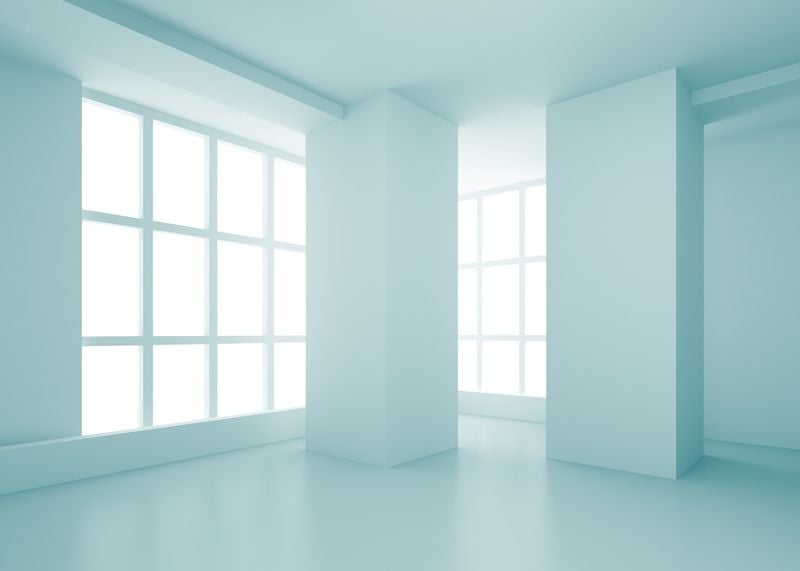How to pick the right colour for your home
)
Selecting paint colours is all fun and games until someone has to pick a white. With a kaleidoscope of hues to choose from, it can be overwhelming knowing which one will best complement your home's overall aesthetic and mood. So, if you're looking for a little interior tint-spiration, Dulux colour expert Andrea Lucena-Orr shares her top dos and don'ts for working with colour.
Picking paint colours for your home is never black and white. You can sift through swatches until you're blue in the face and still be no closer to understanding what is going to not only look good on your walls, but what will help you feel the best within them, too.
"Colour is one of the most transformational and least expensive tools a homeowner has," Dulux Colour and Communications manager Andrea Lucena-Orr says. "It has the power to transform your home, and your life, by creating mood, atmosphere or improving quality of living. It can help solve bad design and enhance great design and can visually alter our perception of a space. And it all starts with a can of paint."
Sounds simple enough, right? Au contraire.
Andrea says colour is so multifaceted that creating a certain ambience or atmosphere is not as easy as slapping some fresh paint on the walls and expecting magic. There are many considerations such as hue, tone, temperature and even light that can impact the way a colour interacts with a space.
If you missed our Dulux colour masterclass with Andrea last week, here is everything you need to know about the fundamentals of working with colour.
HOW COLOUR WORKS
To perceive colour, Andrea says, we need light, and the type of light natural or artificial can impact the way colour appears. Because there are so many moving parts when it comes to the way we view colour such as the light itself, the properties of the object we're viewing and our eyesight often colour can appear to play tricks on us. Understanding what those tricks are and how to use them to our advantage is where colour experts come in.
TONE VS TEMPERATURE
Tone is arguably one of the most transformational aspects of colour. "It is a key component in setting the mood in a space," Andrea says. The combination and number of tones used, as well as the way in which they are presented such as stripes or patterns all help to create certain shapes, textures or atmospheres. "In painting and drawing, tone is what gives 3D form to a two-dimensional object. It can also be used to alter the way we perceive a room or structure through contrast, or a lack thereof," she says.
Temperature, on the other hand, refers to the perceived warmth or coolness of a colour. Generally, Andrea says, colours associated with sunshine are considered warm such as reds, oranges and yellows, while those associated with blue skies, grey days and the ocean are considered cool greens, blues and purples.
"Warm colours can be seen as advancing and more active, while cool colours can appear as recessive and calming," Andrea says. "Most colours can have warm and cool variants to them."
As a general rule, she says, if you want to create a cosy space, choose warmer colours as the overriding scheme or, if you want an airier, more open and casual atmosphere, select cool colours.
ALL ABOUT THAT BASE
When it comes to interiors, neutrals are by far the most popular category in Australia. "A true neutral is defined as a hue without any colour," Andrea says. "So this would be our pure whites, greys and blacks."
These days, however, neutral is used as an umbrella term encompassing a range of unobtrusive colours including whites, stones, browns, beiges, greiges and greys, with many people often incorrectly assuming that 'neutral' means it will go with everything.
Just because something is neutral, however, doesn't mean it has no colour there are often myriad undertones lurking beneath the surface.
Undertones in paint are the result of mixing two or more tints of colour together. The more complex the colour, the more complex the undertone. Often undertones are easy to spot; however, in many instances, they can be so subtle that they are only noticeable in certain lights or in combination with other colours.
"Neutrals can be full of colour and quite complex in their make-up," Andrea explains. "This is why they can be challenging and create unexpected outcomes. Undertones can show up when you least expect them and, if we don't understand them, they can make perfectly reasonable schemes go very wrong."
HIGHLIGHTING UNDERTONES
If you want to make sure the undertones a particular hue is going to throw, the best way to bring them out is to use complementary colours as these amplify and intensify each other.
"If you have a pinky beige, comparing it against a green will highlight the pink or, if you have purple grey, compare it against yellow," Andrea says. "With whites, compare against the purest white you have available, such as Dulux Vivid White."
PERENNIAL FAVOURITES
If you're feeling overwhelmed with choice, there are a few interior colours that are tried and true. "It's great to have a set of go-to colours in your back pocket," Andrea says. "These are colours that are really versatile and tend to look great in any situation, regardless of other materials, type of light or the style of space.
"A long-term favourite is Dulux Natural White. For a neutral white that doesn't appear to show undertones, Dulux Vivid White is a great option; it's a bright, clean white, however with softness and subtle warmth. For those headed to the dark side, Dulux Domino is a great charcoal. It is almost black, but not quite, so it is a tad softer and works both inside and out. And for those who love the grey trend, a wonderful warm grey in a light to mid tone is Dulux Flooded Gum."
ANDREA'S TOP TIPS FOR PICKING COLOURS
Use the largest colour swatches that you have available or get a Dulux Sample Pot and paint a test patch on the wall so you can see how the colour looks under different lights.
Don't forget to assess fixed materials - such as bricks, timber floors, benchtops, furniture etc. - if they are staying in situ, before you make your final colour selection.
View colours in the right lighting conditions. For example, if the room to be painted has fluorescent lights, make sure you pick colours under your fluorescent lighting.
Keep undertones the same throughout scheme.
Leverage complementary colours, but remember proportion. Be wary of red/pink with green. It's not that the combination is wrong, but that many customers often are surprised at the final appearance of the colours together. This most often crops up with pinky-beige flooring either tiles or carpet. Before painting, the flooring can appear to be a neutral beige with mostly yellow undertones. But, if the client chooses a wall colour with a green undertone, all of a sudden the neutral beige flooring can appear to look pinkish generally not the result they're looking for.
Finally, avoid pairing yellow beige with pink beige as the yellow can end up appearing dirty.
This post originally appeared at metricon.com.au/home-truths as Setting the tone: How to pick the right colours for your home and is published here with permission.
) Author:Mark Attard
Author:Mark Attard| Tags:Home stagingPropertyreal estateInterior stylingUpgrading your HomeFirst Home Buyers |










